What is plein air painting?
Plein air means outdoors in French. As such, plein air painting is the act of painting outside in order to capture landscapes in their natural environment.
But why do plein air painting in the first place when you can paint from the comfort and convenience of your home?
Well, in today’s article, I’m exploring the benefits of painting outdoors so that you can:
- Learn about the benefits of painting from life as opposed to relying on images and stock photos
- Invest in the art supplies and equipment that are best suited for artists who paint outside
- Understand which watercolour techniques and best practices will help you paint efficiently in an outdoor environment
By the time you’re done reading, you’ll be prepared to embrace plein air painting in any weather or season.
DISCLOSURE: This page contains affiliate links. If you make a qualified purchase using any of the links, I’ll earn a small commission at no extra cost to you. I appreciate every sale because it allows me to create free content to promote the growth of this website.
Table of Contents
What Does Plein Air Painting Mean?
Plein air painting is the process of painting outside. For this reason, subject matter is usually based on landscapes including mountains, fields, forests, and seascapes.
But it can also include barns, windmills, silos, statues, and other man-made structures that are often found in landscapes.
That’s great, but now you’re probably wondering how do you pronounce plein air?
Well, in English we say plen air. Think of the word pen with an l added after the p. That being said, Americans often pronounce it as plain air.
So don’t be surprised if you hear 2 different pronunciations of the same word.
Why Do Plein Air Painting?
Plein air painting is very beneficial for artists, especially if you’re looking to improve your skills as a watercolour beginner.
First of all, painting outdoors gives the artist the opportunity to paint by using natural sunlight. This lighting helps the painter see colour in its purest form. For example:
- Artists can do many field studies of landscapes and environments to more accurately capture the true colour of the scenery
- Natural lighting helps artists understand the dynamics of light and shadow and how they influence 3-dimensional objects
- Artists can learn how to mix colours more naturally since they’re not relying on edited photos which often distort colour
Secondly, plein air painting trains the artist to paint from observation. This is an important skill to develop because it trains an artist’s eye to interpret what it sees. For example:
- Painting from observation trains an artist’s eye to observe a 3-dimensional subject to capture its form, depth, and ambiance more accurately
- Painting outdoors forces an artist to capture the landscape during different hours of the day when the light source (the sun) changes position in the sky
- Observing a scenery helps an artist develop their interpretive skills so that they don’t have to rely on photos and references
As you can see, photo references are limited by their 2-dimensional interpretation of reality. Therefore, photos limit an artist’s ability to accurately interpret the subject matter.
As well, references images are often limited by digital editing and retouching in an attempt to make the photos look perfect.
In other words, digital manipulation skews the integrity of the subject matter, which is one of the main reasons why artists enjoy plein air painting instead.
Check out this article with tons of photos to see a what a plein air paintig setup looks like.
What Supplies Are Needed for Plein Air Painting?
The best advice I can give you is to bring along good-quality watercolour art supplies that are lightweight and portable.
Why?
Because they will be easier to carry around in your backpack. Fewer supplies means less weight and less bulkiness.
So, it will be easier for you to pack up and paint in several difference locations if you choose to move around.
That being said, here is my personal list of plein air painting supplies:
- Watercolour pans. I use the Winsor & Newton Cotman Watercolors or the Sakura Koi Watercolors since they are both lightweight, compact, and they’re both easier to transport than tubes
- Watercolour pencils. I use the Faber-Castell Albrecht Dürer Pencils because you can apply them both wet and dry
- Watercolour brushes. I use the Pentel Aqua Brushes because they come with water barrels which you can fill up with water
- A thick sketchbook with binder clips or a watercolour block. I use the Arches cold-pressed watercolour block or the Canson Mixed Media sketchbook. The sketchbook is ideal watercolour pencils
- A plein air painting easel
- A mixing palette is needed if your paint set doesn’t come with one
- 2 jars of water are needed if your watercolour brushes don’t have refillable reservoirs
- Paper towels or a cloth
- A pencil (I use the Staedtler Mars Lumograph graphite pencils)
- An eraser (I use the Faber-Castell kneadable erasers)
- An umbrella to shield your painting from blaring sunlight or to protect your painting in case it rains
If you don’t have a painting easel, you can sit and rest your sketchbook against your knees or you can paint at a picnic table in a local park.
Now that you know what to bring when plein air painting, it’s time to take a look at plein air best practices.
Let’s go!
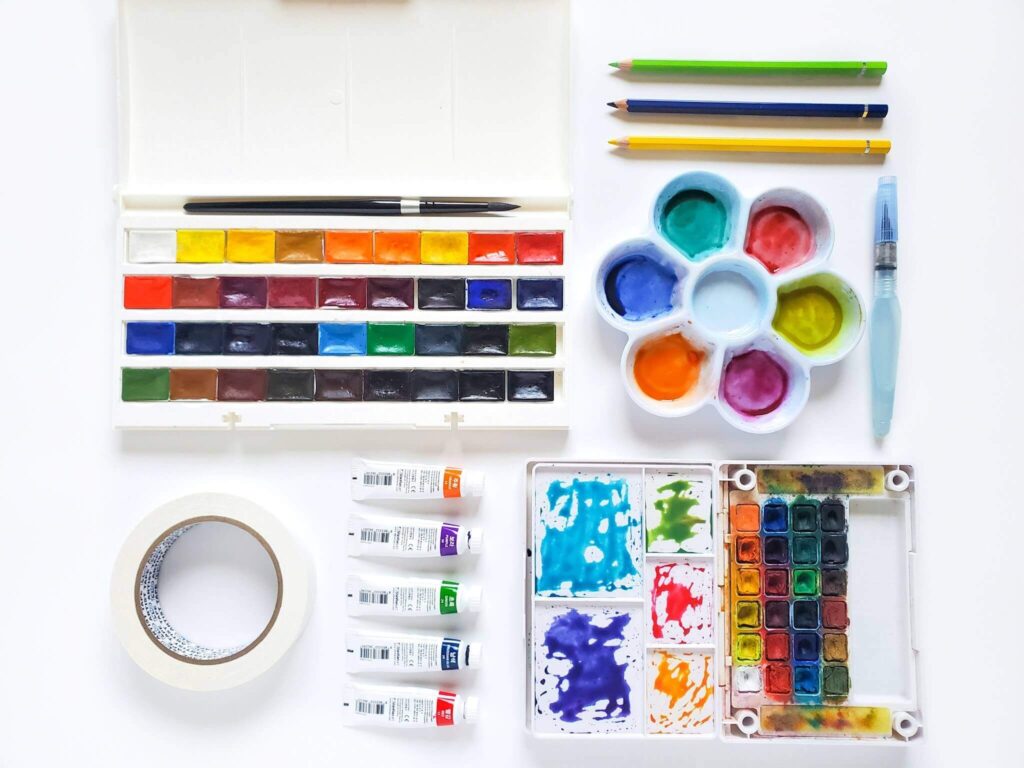
Plein Air Painting Techniques and Best Practices
Plein are painting with watercolour isn’t too different from painting in a studio or in your home.
In fact, you can use many common watercolour hacks even if you’re painting outside.
However, there as some rules for plein air painting that you should take into consideration so that you’re prepared to paint outdoors.
Without further ado, here’s a detailed list of some of the most important plein air techniques and best practices:
- Dress appropriately for the temperature. Dress coolly in hot temperatures and warmly in cold temperatures. Consider using sunscreen or bug spray if you’re painting outside in summer
- Pack necessary equipment that is weather-specific. For example, bring an umbrella for cloudy or rainy days and a hat for sunny days
- Pack only the most relevant plein air watercolour supplies. The fewer items, the better because carrying a lightweight backpack will be easier for you in terms of weight
- Pick a desirable location that is suitable for painting. For instance, make sure you set up your painting supplies in an area where you are not likely to be disturbed by loud noises or crowded spaces. Make sure the terrain is even and that the area is not too windy
- Consider the light source in the area where you’re painting. As the sun moves through the sky, shadows will slowly but surely change in terms of length and size
- Avoid painting at noon. Shadows are at their smallest and shortest length during midday because the sun is directly above you in the sky. Therefore, consider painting earlier in the morning or later in the evening at golden hour, as photographers call it
- Create a small thumbnail. Make sure that you are preserving some of the white of the paper. Think about where your darkest shadows will be and where the brightest highlights will shine
- Warm-up by drawing a handful of sketches. These warm-ups will better prepare your hand for painting. As well, you can take this time to make important artistic decisions about composition, light and shadows, etc.
- Paint quickly and as loosely as you can. Since certain factors such as the wind and warm temperatures may affect how fast your painting dries, it’s best to paint quickly and to not worry about meticulousness because perfectionism ruins your art
- Feel the fear and do it anyway. Plein air painting for beginners can feel quite intimidating. Although you might feel clumsy painting outside, or you might fear that the weather and elements will be against you, you should not allow these fears to hold you back
- Take photo references with your phone in case the weather interrupts your painting session. The weather can be unpredictable. Therefore, if your plein air painting session is cut short, take a few photos of the scenery so that you can finish your painting at home
If you keep these plein air painting best practices in mind, I’m sure you’ll have a wonderful time painting outdoors!
If you enjoyed these tips, then check out this article about the best watercolour tips to make you paint with confidence.
Conclusion
And there you have it!
You now understand what plein air painting is how it benefits artists who want to learn how to paint better with watercolours.
The benefits are numerous, including interpreting colour more accurately, training your eye to paint from observation, and learning how to translate a 3-dimensional landscape onto paper.
And keep in mind that you can do plein air painting no matter the weather or temperature as long as you are properly prepared to brace the elements.
The next time you have free time, I encourage you to go outside and paint for a while.
Not only is painting outside in nature great for an artist’s mental health, it also gives you the opportunity to explore the beauty of the natural world.
Have you tried plein air painting, or do you plan to give it a try for the first time? Share you experience in the comments below!
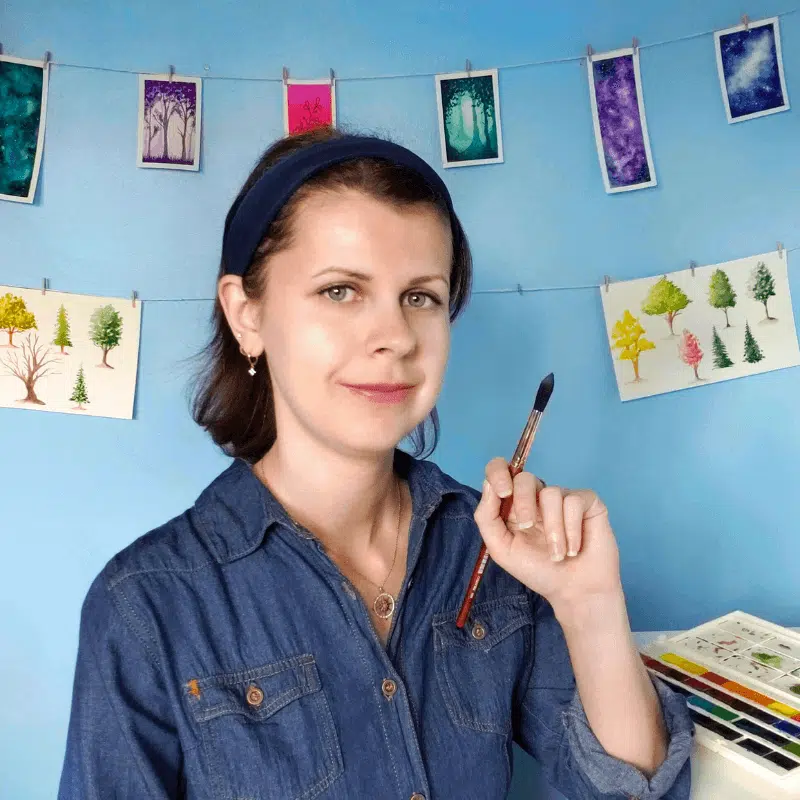
Miranda Balogh
Artist & Online Educator

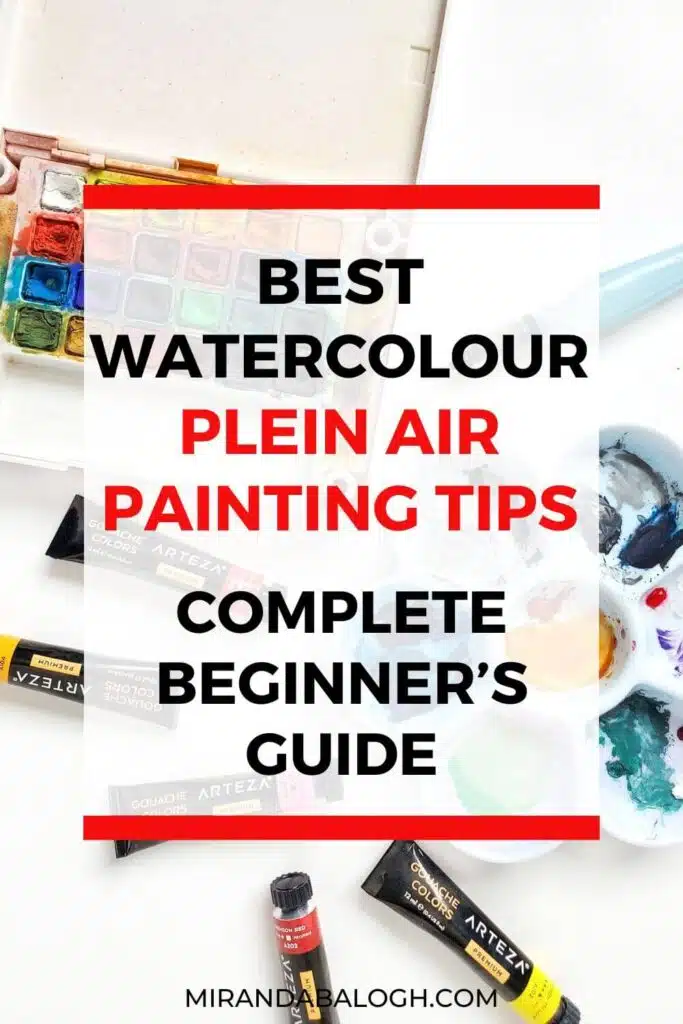
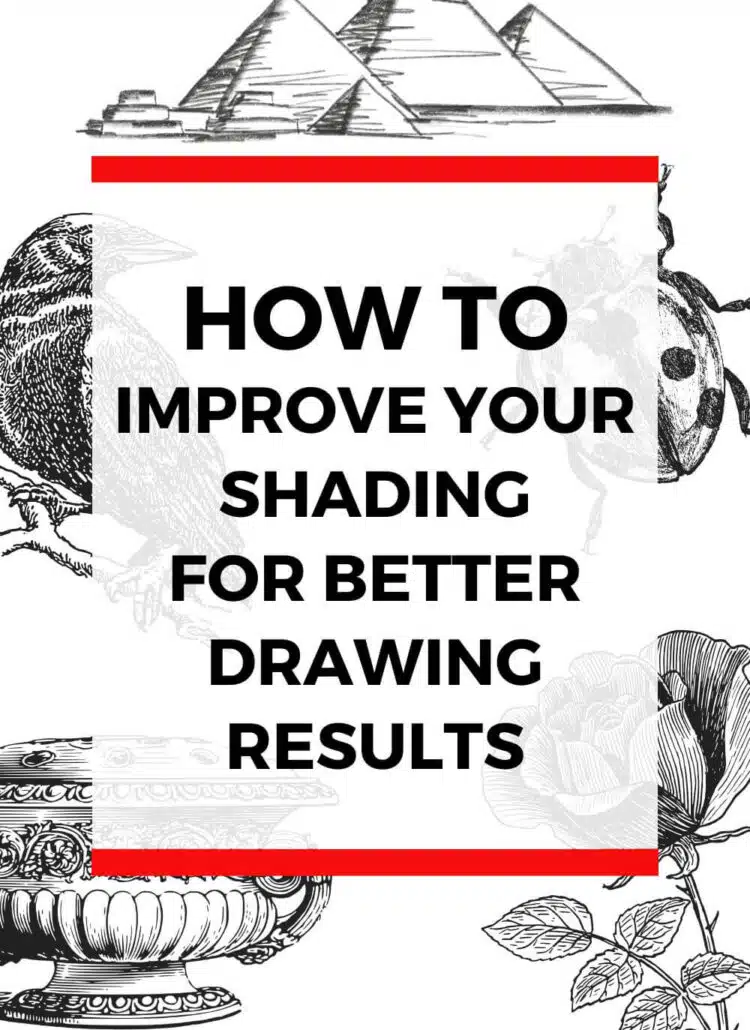
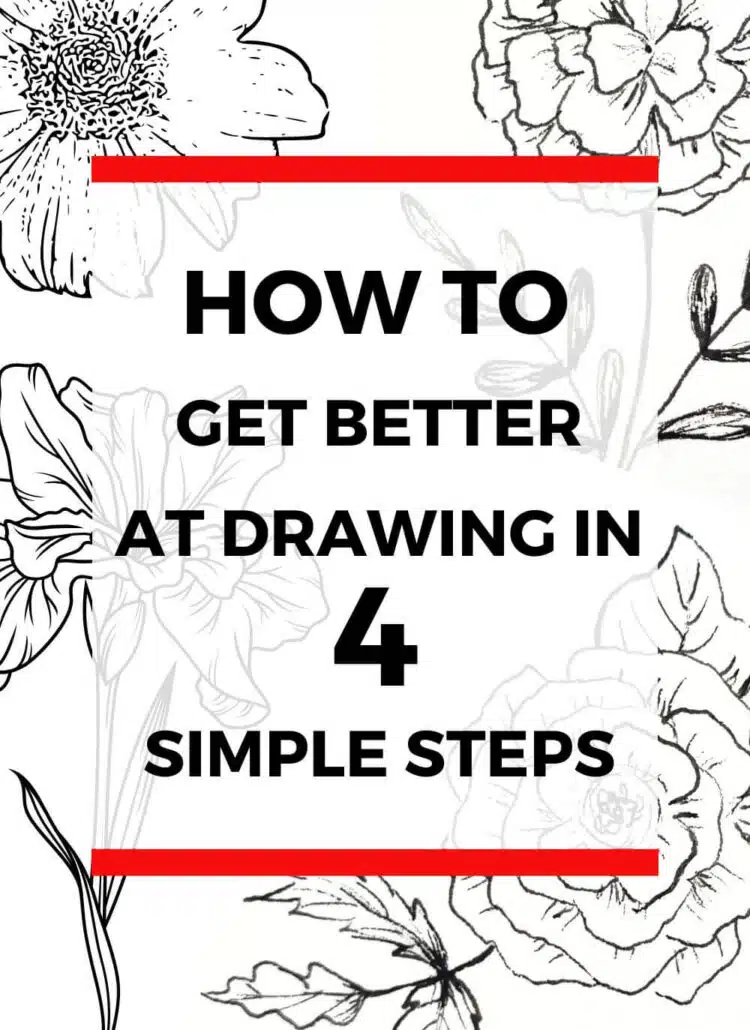

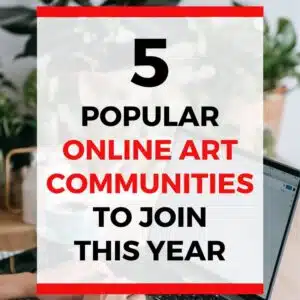
I am intimidated with painting I feel like I dont have talent for that even if I tried water color painting years back but now I am keen to try again. Thanks for this.
When I was a beginner, I was intimidated by watercolour painting, too. But like anything, if you give it time and practice, you are sure to succeed!
Now I know some French! I love the idea of painting outside, especially outdoor scenes because the natural light illustrates the outdoors in a natural environment. I think you would see details and shades of color that electrical light couldn’t do justice to.
I whole-heartedly agree with your statement. Good lighting can make all the difference in art as well as photography. Thanks for sharing this insight!
I went to art school but am ashamed to say that I’ve never actually done plein air painting. It’s something I’ve always wanted to do (along with wanting to “brush up” … yes, pun intended, haha … on my watercolor skills). But I’ve been too intimidated. You give some excellent tips here and have inspired me to give it a try! Perhaps I’ll bring some supplies with me on my next hike. Thanks for sharing!
Your story is relatable! It took me forever to get around to plein air painting because I felt intimidated, too. And I thought it would be a hassle to lug around all that watercolour equipment. But once you realize that it’s quite easy to pack light and compact art supplies, painting en plein air suddenly becomes more accessible.
Thank you for your beautiful article. I want to go back to paint and after so many years I am a bit intimidated and your post makes it easy for me to do so.
Thank you! I’m glad this article has inspired you to paint again.
I had not actually never heard of plein air painting. Such a beautiful way to create art.
Yes, it is a beautiful way to create art.
I’ve painted on and off for years but sadly, I’ve never tried plein air painting! I really should give it a try. These are really helpful tips!
Thanks! Give plein air painting a try sometime. I bet you’ll enjoy it!
I enjoy painting but always had trouble using watercolors. This is very helpful. I’ll share it with my clients as well who are mainly artists. 🙂
Awesome, thank you so much!
Very well put. Outdoor painting would be so therapeutic.
Agreed, plein air painting is very relaxing and therapeutic! This is one of the major reasons why I encourage artists to embrace painting en plein air.
I didn’t realize that painting outdoors has a name! Great article, that’s easy to read and has useful tips 🙂
Thanks! I’m glad you enjoyed reading this article.
This makes sense to me now, this wasn’t teached at schools either. Thank you.
You’re welcome! Thanks for sharing.
Amazing post! Looks like I have a new hobby!
Yay! Watercolour painting is such a great hobby.
Wow, this is such an informative article. I can’t wait to try this and start creating! Thanks for the amazing tips!
You’re welcome! I’m glad you liked this article.
Wow I have never heard of this! I’d love to try plein air painting myself! Thanks for your tips 🙂
Give it a try. I think you’ll enjoy it!
I have always wanted to learn to paint and doing it outside seems dreamy! Great post.
Dreamy is such a beautiful way to describe plein air painting. I’m glad you enjoyed this post!
As a painter myself, I really appreciate the tips you have shared in this post. These will come in very handy. I especially love the idea of outdoors
Thank you! I’m glad you found this article useful.